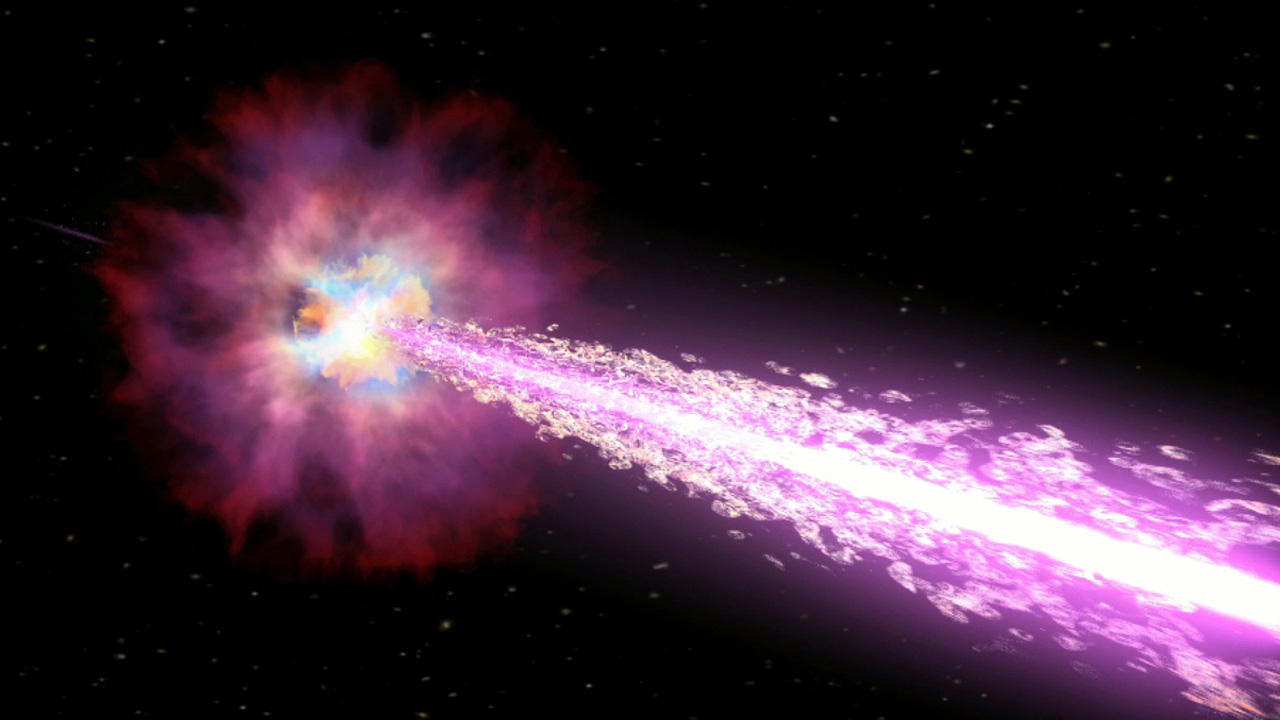Mysterious energy burst from the early universe puzzles astronomers
The strange signal is five times longer than the longest detected gamma-ray bursts of its type.

A mysterious, 16-minute-long explosion of energy detected from the beginning of the universe could be the result of a gravitational mirage — or something that astronomers can't explain.
Gamma-ray bursts (GRBs) are the most powerful explosions in the universe since the Big Bang. Typically, these short and extremely bright flashes of light only last seconds to a few minutes.
But now, astronomers have discovered one named GRB 220627A that lasted for more than a thousand seconds — or just shy of 17 minutes. It arrived in two powerful bursts from an unknown event 2 billion years into the universe's existence.
Related: Brightest gamma-ray burst ever detected defies explanation
While astronomers haven't found any indication that the source of the burst was out of the ordinary, its length and double-burst nature has left them puzzled. The researchers published their findings July 19 on the database arXiv and are yet to be peer-reviewed.
When a massive star runs out of fuel, it collapses before exploding outward in a gigantic supernova, leaving behind an ultra-dense neutron star or a black hole. It is these stellar explosions —and occasionally even collisions between two neutron stars — that produce powerful bursts of gamma rays that can be picked up by space observatories such as NASA's Fermi Gamma-ray Space Telescope, which detected the new GRB.
To investigate the strange signal, astronomers studied its afterglow — the fainter and less energy-intense light created by GRBs when shock waves from the initial explosion slam into gas and dust surrounding the burst star.
Sign up for the Live Science daily newsletter now
Get the world’s most fascinating discoveries delivered straight to your inbox.
Yet the GRB's afterglow only deepened the mystery: Unlike the long duration of the burst it came from, the afterglow was entirely normal, appearing much like those produced by regular, minutes-long GRBs.
"Our observations and modeling of GRB 220627A do not suggest that a different progenitor compared to the progenitor of normal long GRBs is required," the researchers wrote in the paper.
The likeliest explanation is that the GRB is the product of gravitational lensing. First predicted by Einstein’s theory of general relativity in 1915, gravitational lensing is the warping of distant light sources by extremely massive objects such as galaxies and black holes — which would stretch, distort and create echoes of the GRB's signal before it arrived at Earth.
It's possible that the presence of a gigantic black hole or galaxy between us and the GRB's source is lengthening as well as duplicating its signal, the researchers suggested.
But to be more certain, the astronomers will need to characterize the strange signal in better detail, which will require more study and the detection of other stretched-out gamma-ray mirages, the researchers noted.

Ben Turner is a U.K. based staff writer at Live Science. He covers physics and astronomy, among other topics like tech and climate change. He graduated from University College London with a degree in particle physics before training as a journalist. When he's not writing, Ben enjoys reading literature, playing the guitar and embarrassing himself with chess.









